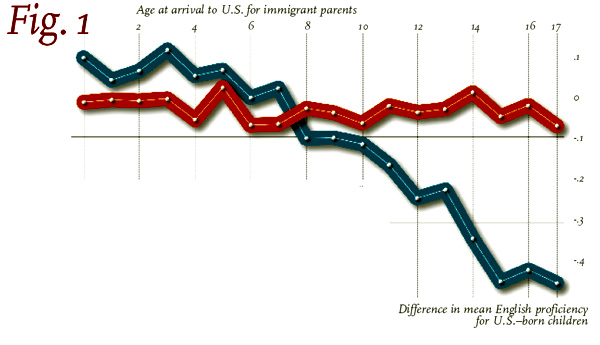|
||
      |
Fig.1
Tongue tied
For those learning a new language, linguistic science favors the young—the ideal age is no older than 12. Small wonder that some adult immigrants to the U.S. never speak fluent English; what’s more surprising is that sometimes their children don’t either. Half of Hispanic schoolchildren classified as “limited English proficient” are American-born, a fact that piqued Graduate School of Business researcher Hoyt Bleakley’s curiosity. Using 2000 census data in a July working paper, he found parental influence especially pronounced in the youngest first-generation children, who spend more time at home. Five- and six-year-olds’ English proficiency (represented by the blue line) plummets in proportion to their parents’ rising immigration age. By the time children reach 13 (the orange line), language skills depend less on parents than on peers and teachers. But those earliest years of schooling, Bleakley warns, encapsulate vital “human capital formation.”
